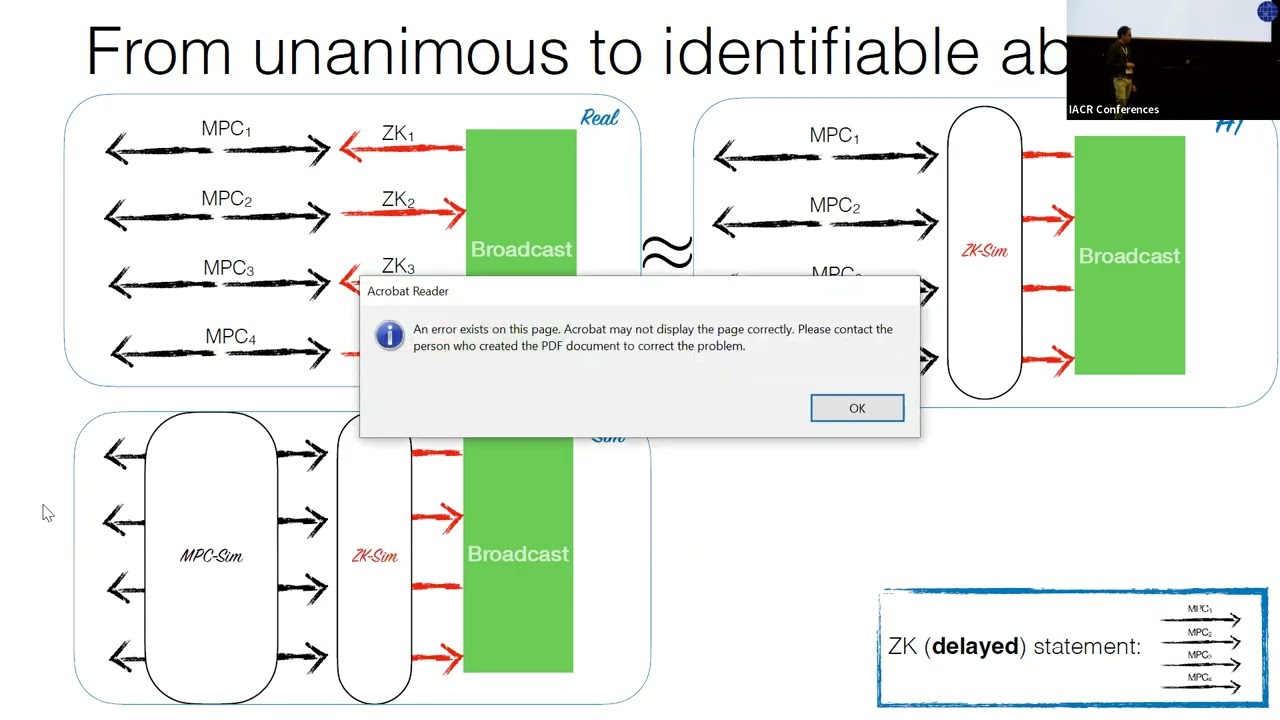Welcome to the resource topic for 2022/645
Title:
Round-Optimal Multi-Party Computation with Identifiable Abort
Authors: Michele Ciampi, Divya Ravi, Luisa Siniscalchi, and Hendrik Waldner
Abstract:Secure multi-party computation (MPC) protocols that are resilient to a dishonest majority allow the adversary to get the output of the computation while, at the same time, forcing the honest parties to abort. Aumann and Lindell introduced the enhanced notion of security with identifiable abort, which still allows the adversary to trigger an abort but, at the same time, it enables the honest parties to agree on the identity of the party that led to the abort. More recently, in Eurocrypt 2016, Garg et al. showed that, assuming access to a simultaneous message exchange channel for all the parties, at least four rounds of communication are required to securely realize non-trivial functionalities in the plain model. Following Garg et al., a sequence of works has matched this lower bound, but none of them achieved security with identifiable abort. In this work, we close this gap and show that four rounds of communication are also sufficient to securely realize any functionality with identifiable abort using standard and generic polynomial-time assumptions. To achieve this result we introduce the new notion of bounded-rewind secure MPC that guarantees security even against an adversary that performs a mild form of reset attacks. We show how to instantiate this primitive starting from any MPC protocol and by assuming trapdoor-permutations. The notion of bounded-rewind secure MPC allows for easier parallel composition of MPC protocols with other (interactive) cryptographic primitives. Therefore, we believe that this primitive can be useful in other contexts in which it is crucial to combine multiple primitives with MPC protocols while keeping the round complexity of the final protocol low.
ePrint: https://eprint.iacr.org/2022/645
Talk: https://www.youtube.com/watch?v=RyQOb72lXms
See all topics related to this paper.
Feel free to post resources that are related to this paper below.
Example resources include: implementations, explanation materials, talks, slides, links to previous discussions on other websites.
For more information, see the rules for Resource Topics .
